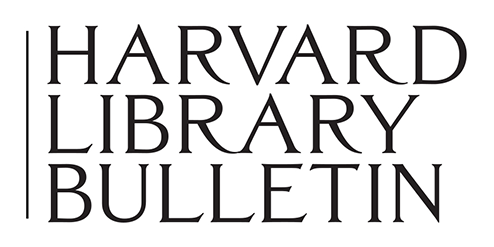All long-form articles should be submitted as Microsoft Word documents through the link above.
Generally, long-form articles should be 7,500–9,000 words, excluding notes. HLB has historically agreed to publish very long articles; while we may continue to do so at our discretion, such articles may be divided into parts and published separately.
Long-form articles will be distributed for blind peer review. Authors should remove all identifying details from the manuscript document, including their name(s), contact details, and personal acknowledgments. Instead, authors should upload a title page with this information.
Please prepare the manuscript using the following formatting guidelines:
Page setup
Please follow the default page format settings in Word:
-
Letter page size (8.5” x 11”)
-
Default margins (1.25” left and right; 1” top and bottom)
-
Left alignment
-
Page numbers in upper right header
All text should be double-spaced and set in 12-point Times New Roman.
Headings
To facilitate online publishing and reading, authors should divide articles into sections with headings. Headings should be in Bold Title Case.
Citation and Style
Articles may be submitted in any recognized academic citation style. Upon acceptance, the author will be expected to convert citations to Chicago style. HLB’s style sheet provides more detailed information on style and copyediting.
Images
Do not embed images in the Word document; instead, upload a compressed folder of images separately from the manuscript. Images should be formatted as TIFF or JPEG files. Please identify each image by file name: fig01.jpg, and indicate its location in the text (FIGURE 1) along with the caption.
High quality images are not expected at the time of submission. Upon acceptance, the author is responsible for acquiring both high quality images and the appropriate permissions.
Tables
Tables should be inserted using Microsoft Word’s table function rather than formatted manually, and should be placed where the author would like them to appear. Each table should be referenced explicitly in the text: (see Table 1). As with the illustrations, each table should be accompanied by a caption that begins with its identifying information, e.g. Table 1.
Translations
Articles should be submitted in English. Non-English passages of a few words may be included in the body of the article, italicized, and followed by a translation. When quoting non-English sources at length, please present the quotation in translation in the body of the text. The original quotation should be included in an accompanying footnote or as an appendix. The source of all translations should be cited appropriately; multiple translations by the author should be cited in the first instance, along with a note that the following translations are also the author’s work.
Permissions
Authors are responsible for securing permission for all copyrighted material, including images and lengthy quotations. We ask authors to provide proof of permission prior to copyediting and after the acceptance of their submission for publication.
